The Humble Etho Clock
This is for Java Edition. As far as I know, the Etho Clock works in Bedrock, but details (like timings) will be different. I assume 2gt+ signals are not a thing in Bedrock.
The Etho Clock shows up in a lot of redstone tutorials as a clock with programmable cycle length. But it is more than that - it will always complete its current cycle, making it safe to turn off at any moment (important when using the longer signals) and giving spam protection (important when using the start pulses). When used as a clock, the signals and delays are always the same on the first and all subsequent cycles.
It has a built-in latch, so it can be used as a latch or t-flip flop. And by having one half auto-reset and the other controlled by an input signal, you get a monostable with spam protection, or even a monostable/pulse extender.
Timings and Signals
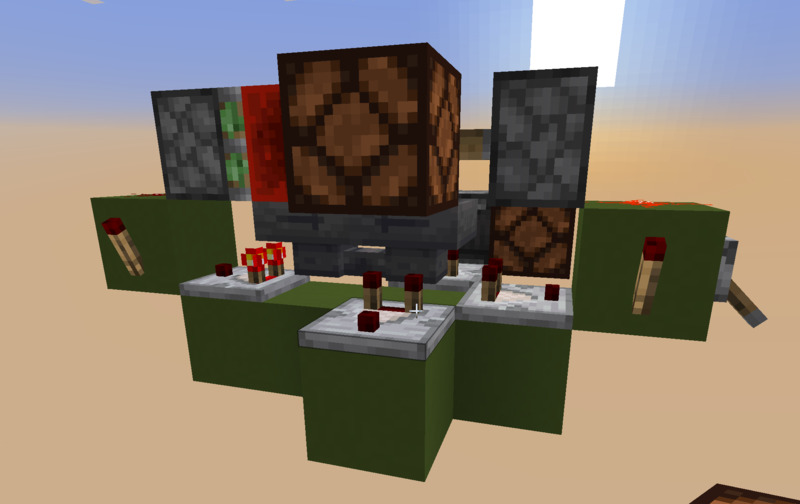
The three most useful signals are:
- The torch on the right (near the off-switch) gives a 2gt+ signal at the start of the cycle - this can be used with comparators and torches but sticky pistons will eject their block.
- In the position of the front lamp, a continuous signal for the first half cycle (minus the start pulse) can be taken.
- The comparator pointing in front gives a continuous signal for the whole cycle (minus the start pulse).
A continuous signal for the second half can be taken from the redstone block in its left position.
Combining an additional comparator reading from the right hopper with a falling edge detector gives a signal at the end of the cycle (in the example image, the comparator at the back leads into sticky piston pushing an observer).
| Items | Total Cycle | Up (RS Block) | Down (RS Block) |
| 2 items | 20gt (1s) | 8gt (0.4s) | 12gt (0.6s) |
| 3 items | 36gt (1.8s) | 16gt (0.8s) | 20gt (1s) |
| 4 items | 52gt (2.6s) | 24gt (1.2s) | 28gt (1.4s) |
| 5 items | 68gt (3.4s) | 32gt (1.6s) | 36gt (1.8s) |
| 6 items | 84gt (4.2s) | 40gt (2s) | 44gt (2.2s) |
| 7 items | 100gt (5s) | 48gt (2.4s) | 52gt (2.6s) |
| 8 items | 116gt (5.8s) | 56gt (2.8s) | 60gt (3s) |
| 9 items | 132gt (6.6s) | 64gt (3.2s) | 68gt (3.4s) |
| 10 items | 148gt (7.4s) | 72gt (3.6s) | 76gt (3.8s) |
| 11 items | 164gt (8.2s) | 80gt (4s) | 84gt (4.2s) |
| 12 items | 180gt (9s) | 88gt (4.4s) | 92gt (4.6s) |
| For n >= 2 | 4 + 16*(n - 1) | 8*(n - 1) up | 4 + 8*(n - 1) down |
I would not recommend using an Etho clock with 1 item. The half-cycles become odd (5gt up/9gt down), and the start pulse is unreliable. It behaves differently depending on the input signal (i.e. when the clock is on for longer periods, you get an alternating 14gt signal, when triggered by a short signal you get anything between a 2gt and 7gt pulse).
2gt+ Signal aka Extended 2 Game Tick Signal
Normally, a 2 game tick signal will cause a sticky piston to eject its block, and it will not pass through comparators or torches.
An Extended 2 Game Tick Signal will still cause a sticky piston to eject its block, but it will pass through torches and comparators.
This means the start and half-time pulses can be used in logic circuits or torch towers, but they can also be used as a normal 2gt signal. A repeater or observer will turn a 2gt+ signal into a normal 2gt signal.
There are other ways to produce a 2gt+ signal (generally by a block event triggering the removal of a power source). Ilmango has an excellent video on Extended 2 Game Tick Signals.
Example: Monostable with Spam Protection
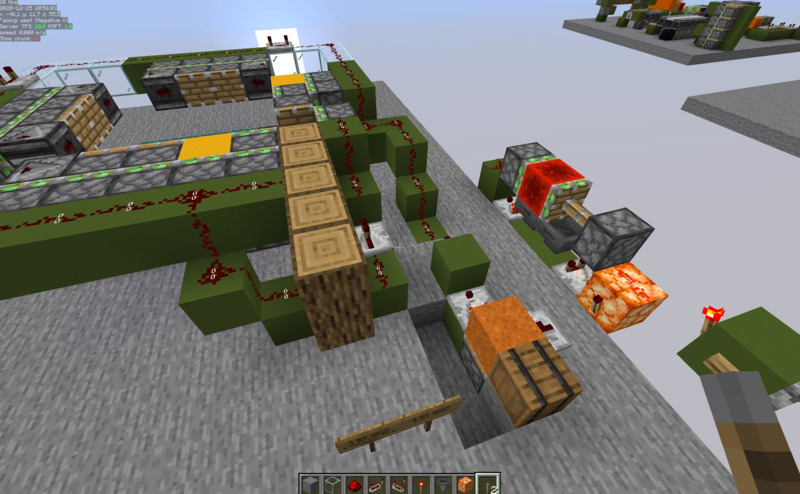
This is the piston layout for a Gnembon-style tree farm. It runs on a 10 gt signal, with 8 gt delay between the piston groups. The final piston column needs a 10 gt delay.
We need a 2gt signal into the sand on the piston to start the piston sequence, and it must not be signaled again before the piston sequence has completed. The Etho clock (3 items) provides both guarantees, no matter how often the button is pressed or how fast that lever is toggled.
In a real farm, the piston sequence would be triggered by a comparator reading the bonemeal dispenser through the tree. The clock would be positioned further back. It is in this position because it gives a good view of piston sequence.
Example: Monostable II
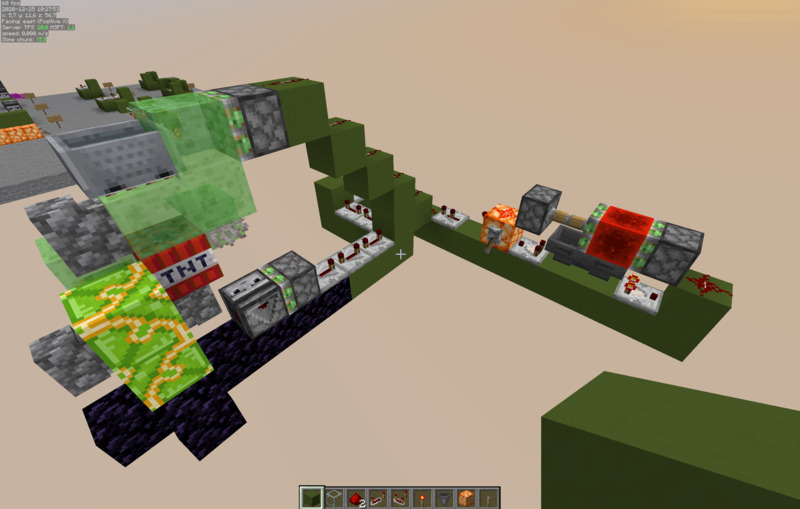
This is from Ilmangos Simple Oak/Birch farm. It is kind of special because the TNT is duped on retraction - at the end of the signal. The trap door is pulsed by the observer when the lower piston extends - at the start of the signal.
Usually TNT dupers will be controlled by the half-cycle signal, here the 2gt+ pulse is better because we need a short signal.
The clock contains 5 items - with a constant signal, the next tnt is already falling while the trap door operates.
Example: Monostable/Pulse Extender

The screenshot shows the control of a TNT duper for a stem farm.
The input is the NoTree signal on the right. When this goes down, a TNT is duped every 4.2 seconds until the trunk has been pushed up by a piston.
The output is the DuperActive signal on the left. It goes into a logic circuit that controls the main farm. When the tree trunk has been pushed up and the current TNT has has exploded, the farm will go back into grow mode and signal the TNT duper again when the next tree has grown.
Example: Monostable/Pulse Extender II
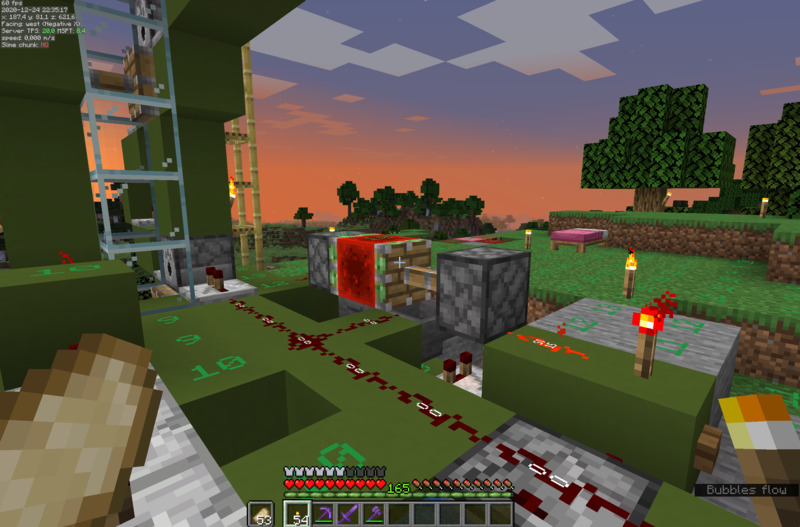
This example shows an Etho clock controlling a variation of an Etho TnTree Farm. 6 dispensers loaded with TNT are spaced over 21 blocks, with a 24 gt delay between. Below every dispenser is a piston that will retract 36 gt later, giving the TNT a fall height of 27ish blocks.
It’s a nice and fun farm, but if the signal is too short, the lower pistons will extend before the last TNT has passed by and the farm will blow up.
The Etho clock is triggered by pressing the button, or by the observing a bubble column onto a 2-tick repeater. It has 21 items in it and that is just short enough to not blow up. The second half of the cycle allows all pistons to extend again. This is not strictly necessary, but the player has to plant and bonemeal 4 spruce trees anyway.
Why 21 items? The last dispenser fires 120 gt after the first one, and the last TNT has to fall 20+ blocks before the first piston extends again. The piston delays cancel each other out, it is just the delay between first and last dispenser plus the time for the TNT to fall.
Double Frequency
Much has changed since Etho’s orginal video about his hopper clock, but one trick still works: OR-ing the signal from the redstone block is the same as OR-ing the 2gt+ signals and will give you a 2gt+ signal with doubled frequency.
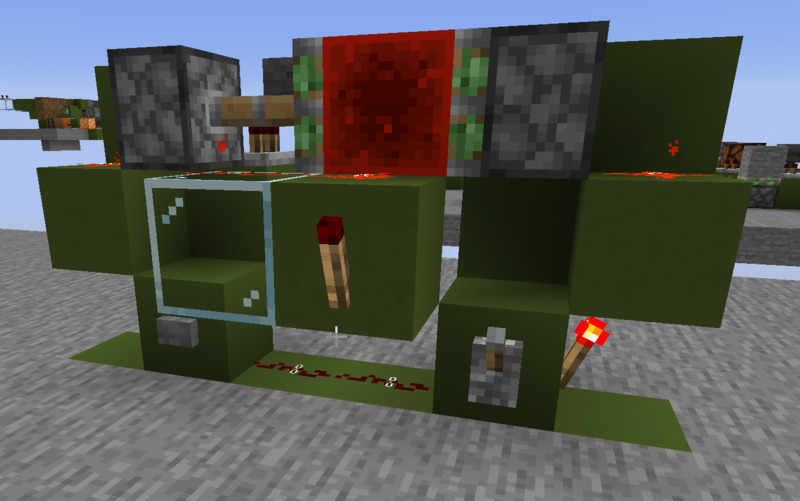
| Items | Double Freq Cycle | Double Freq Up | Double Freq Down |
| 2 items | 10gt (0.5s) | 2gt (0.1s) | 8gt (0.4s) |
| 3 items | 18gt (0.9s) | 2gt (0.1s) | 16gt (0.8s) |
| 4 items | 26gt (1.3s) | 2gt (0.1s) | 24gt (1.2s) |
| 5 items | 34gt (1.7s) | 2gt (0.1s) | 32gt (1.6s) |
| 6 items | 42gt (2.1s) | 2gt (0.1s) | 40gt (2s) |
| 7 items | 50gt (2.5s) | 2gt (0.1s) | 48gt (2.4s) |
| 8 items | 58gt (2.9s) | 2gt (0.1s) | 56gt (2.8s) |
| 9 items | 66gt (3.3s) | 2gt (0.1s) | 64gt (3.2s) |
| 10 items | 74gt (3.7s) | 2gt (0.1s) | 72gt (3.6s) |
| 11 items | 82gt (4.1s) | 2gt (0.1s) | 80gt (4s) |
| 12 items | 90gt (4.5s) | 2gt (0.1s) | 88gt (4.4s) |
| For n >= 2 | 2 + 8*(n - 1) | 2gt+ | 8*(n - 1) |
A logical AND of additional comparator readings on the hopper gives a signal while the circuit is active, e.g. to turn off other parts of a farm or to give some user feedback.